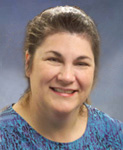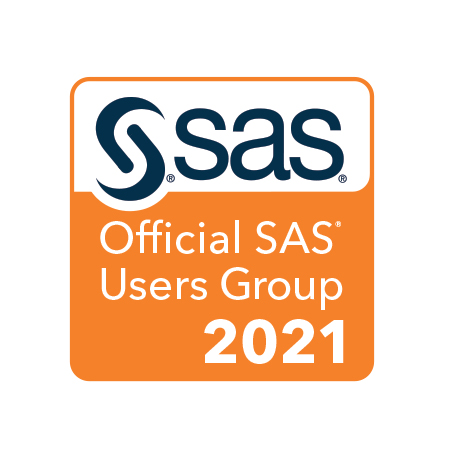|
|
SCSUG 2012 SAS Presenters
Sanjay Matange  |
Sanjay Matange is a Software Development Manager in the Data Visualization R&D area. His team is responsible for development and support of ODS Graphics, including Graph Template Language (GTL), SG Procedures, ODS Graphics Editor and ODS Graphics Designer. Sanjay's group also develops and supports the Silk Components framework that is used in various analytical products and solutions such as Enterprise Miner and Marketing Automation. |
| |
Clinical Graphs using SAS 9.2
Do you wish you could create modern clinical graphs using SAS? Have you heard that it is difficult to create such graphs using SAS? If the answer is yes to any of these questions, this course is for you. This half-day course will cover, in detail, how to create the graphs used in Health and Life Sciences industry, including graphs commonly used for analysis of safety data for clinical trials. In this course, we will build many such graphs from scratch using the most appropriate graph tools from the ODS Graphics tool set, including SG Procedures and GTL.
|
Cynthia Zender  |
Cynthia Zender has been with SAS since 1996 as an instructor and course developer. She currently serves as the Curriculum Manager for the Report Writing and Output Delivery System curriculum. She has over 20 years' experience programming and reporting with SAS in a number of different industries such as Education, Public Utility, Telecom, Litigation Support, and Research Support (clinical studies and survey analysis). Cynthia recently finished a book entitled, "Output Delivery System: The Basics and Beyond", co-authored with Lauren Haworth and Michele Burlew. |
| |
Creating Complex Reports
This 3-4 hour seminar is based on the SAS Global Forum paper of the same name (http://www2.sas.com/proceedings/forum2008/173-2008.pdf ). This seminar is for intermediate SAS programmers. In the seminar, we will investigate how eight (8) complex reports were produced with SAS. All the code that produced the reports will be covered, in detail. All report output is produced using ODS (rather than LISTING) output. The reports to be covered include three versions of a standard demographic report, producing a color-banded report with PROC TABULATE, producing a report which uses special fonts (Bissantz SparkFonts) to produce a sparkline report, several graph examples and several unique report ordering examples. Procedures/Topics to be covered include: REPORT, TABULATE, FORMAT, MEANS, FREQ, Macro processing and DATA _NULL_ programming (as used to produce the reports). Refer to the SAS Global Forum paper to see the actual reports which will be discussed in detail.
|
Don McCormack  |
Don McCormack is a Technical Enablement Specialist at the JMP division of SAS Institute. He has been a practicing statistician for nearly 20 years with experience in both the Semiconductor and Biotechnology industries. Don holds a B.S. degree from Rensselaer Polytechnic Institute and Master's degrees in Education and Statistics from the University of Texas at Austin. He is a member of the American Statistical Association and a Senior Member of the American Society for Quality. |
| |
Making Exploration of Nonlinear Models Fast and Easy Using JMP® 10
Nonlinear models are frequently encountered in applied technological areas such as the semiconductor and pharmaceutical industries. Defect density and pharmacokinetic models are two examples where fitting a straight line to data is inadequate or inappropriate. Exploration of these models is often tedious and time consuming, and model comparison is difficult. Through its Nonlinear platform, JMP 10 introduces a quick and simple way to fit multiple curves and explore competing models, streamlining the discovery process. Two detailed examples are given using data similar to that found in practice.
|
Vince DelGobbo  |
Vince DelGobbo is a Senior Systems Developer in the Web Tools group at SAS. This group's responsibilities include the SAS/IntrNet Application Dispatcher and SAS Stored Processes. He is involved in the development of new Web- and server-based technologies, as well as integrating SAS output with Microsoft Office. He was also involved in the early development of the ExcelXP ODS tagset. Vince has been a SAS Software user since 1982, and joined SAS in 1992. |
| |
An Introduction to Creating Multi-Sheet Microsoft Excel Workbooks the Easy Way with SAS®
Transferring SAS data and analytical results between SAS and Microsoft Excel can be difficult, especially when SAS is not installed on a Windows platform. This presentation provides basic information on how to use Base SAS 9 software to create multi-sheet Excel workbooks (for Excel versions 2002 and later). You will learn techniques for quickly and easily creating attractive, multi-sheet Excel workbooks that contain your SAS output using the ExcelXP tagset. The techniques can be used regardless of the platform on which SAS software is installed. You can even use them on a mainframe! More in-depth information on this topic will be presented if time permits.
|
David Handelsman  |
In his current role at SAS, Handelsman is responsible for leading a team of health care provider, payer and biopharmaceutical analytics experts. This team is charged with identifying those market opportunities where advanced analytics bring dramatic innovations and improvements to the business and science of the Health and Life Sciences industries. In previous roles within SAS, Handelsman has served as the principal product manager for clinical R&D products, where he was responsible for guiding the development and market success of SAS’ pharmaceutical solutions. Prior to joining SAS in 2000, Handelsman was a senior director with ClinTrials Research. Before that, he worked with Pharmaceutical Research Associates (PRA) in Mannheim, Germany and Charlottesville, Virginia. During these 10 years, Handelsman spent the majority of his time both preparing clinical trial data for analysis and delivery to FDA, and managing teams charged with these tasks. Handelsman is currently the chair-elect for the Clinical Data Interchange Standards Consortium (CDISC) customer advisory board, having previously served on the CDISC strategy committee. |
| |
Applying Business Analytics to Optimize Clinical Research Operations
SAS is widely accepted as the gold standard for determinig saftely and efficacy for clinical trials, and it provides the primary mechanism for preparing data for traditional clinical research analysis activities. However, most SAS users in the biopharmaceutical industry are unaware of the broad range of SAS analytics that are widely applied in other industries. This paper discussed and describes how SAS business and advanced analytics can be used to design better trials, forecast patient-based activities, and optimize other operational processes. Applying business and advanced analytics to clinical trial operations represents a new and improved approach to reducing the cost and time associated with managing clinical research projects. As a result, the roles of SAS experts in thebiopharmaceutical industry are expanded.
|
Keith Holdaway  |
Keith Holdaway, upstream domain expert for the SAS Global Oil & Gas Business Unit, provides SAS customers and prospects with consulting expertise based on 15 years of experience as a geophysicist in Shell Oil. When he joined SAS in 1997 as a software engineer, Holdaway added C and C++ cross-platform compilers development and Java Virtual Machines research to his areas of expertise. As a principal software developer, Holdaway uncovered poor Java coding practices and established best practices for SAS Java applications from a performance perspective. He also designed architectures for customers across the mid-tier Java space. |
| |
Let Oil and Gas Talk to You: Predicting Production Performance
How do historical production data relate a story about the subsurface oil and gas reservoirs? Business analysts must perform accurate analysis of reservoir behavior using only rate and pressure data as a function of time. This paper introduces methodologies to forecast oil and gas production by exploring implementations of the AUTOREG, ESM, and MODEL procedures in SAS/ETS. The AUTOREG procedure estimates linear regression models when the errors are autocorrected. The ESM procedure generates forecasts by using exponential smoothing models. Examples of the MODEL procedure arising in subsurface production data analysis are discussed. In addressing these examples, thechniques for pattern recognition, implementing TREE, CLUSTER, and SISTANCE procedures in SAS/STAT are highlighted to explicate the importance of oil- and gas-well profiling to characterize the reservoir.
|
Scott Huntley  |
Scott Huntley is a software developer in the group responsible for Base SASreporting and the Output Delivery System (ODS). He has supported ODS PRINTER since 2004. Earlier at SAS Scott worked on SAS/Warehouse Administrator and in the Installation and Configuration group. Scott has a B.S. in Computer Science from NC State University. He lives in Cary, NC with his wife and two boys. |
| |
A Different Point of View with ODS PDF 9.3
Getting the Right Report (Again): Your Compatibility Guide for ODS PDF 9.2 ODS PDF in SAS® 9.2 looks and acts different from earlier versions. Why? What changed? How can I maintain the same look that I like? This paper written in collaboration with SAS® Technical Support and R&D will take commonly asked questions submitted to SAS Technical Support about ODS PDF and give you the answers. Once you understand how things work and why things changed, you'll have the tools you need to create that perfect report in SAS 9.2.
|
Kathleen Kiernan  |
Kathleen Kiernan, M.S. Statistics, Senior Statistician in Technical Support Division at SAS Institute, has over 20 years experience using the SAS System. I work closely with customers using SAS and JMP in the following areas: Design of experiments, Linear and Nonlinear regression, Linear, Mixed, Generalized Mixed and Nonliear Mixed models, Power, and Genetics. |
| |
Tips, Tricks, and Strategies for Mixed Modeling with SAS/STAT® Procedures
Inherently, mixed modeling with SAS/STAT procedures, such as GLMMIX, MIXED, and NLMIXED is computationally intensive. Therefore, considerable memory and CPU time can be required. The default algorithms in these procedures might fail to converge for some data sets and models. This paper provides recommendations for circumventing memory problems and reducing execution times for your mixed analyses. This paper also shows how the new HPMIXED procedure can be beneficial for certain situations, as with large sparse mixed models. Lastly, the discussion focuses on the best way to interpret and address common notes, warnings, and error messages that can occur with the estimation of mixed models in SAS software.
|
Yiu-Fai Yung  |
Yiu-Fai Yung is Analytic Solutions Manager in the Multivariate Modeling Research Department at SAS Institute Inc. He supports the CALIS and FACTOR procedures. He has been developing structural equation modeling software for more than 10 years. He has published articles in British Journal of Mathematical and Statistical Psychology, Multivariate Behavioral Research, and Psychometrika. He received his M.A. in mathematics and PhD in psychology from UCLA. Prior to joining SAS in 1998, he was Assistant Professor in the Department of Psychology at the University of North Carolina at Chapel Hill. |
| |
Structural Equation Modeling Using the CALIS Procedure in SAS/STAT® Software
The CALIS procedure in SAS/STAT software is a general structural equation modeling (SEM) tool. This workshop introduces the general methodology of SEM and applications of PROC CALIS. Background topics such as path analysis, confirmatory factor analysis, measurement error models, and linear structural relations (LISREL) are reviewed. Applications are demonstrated with examples in social, educational, behavioral, and marketing research. More advanced SEM techniques such as the full information maximum likelihood (FIML) method for treating incomplete observations, robust estimation, and diagnostics for outliers and leverage points in the SEM context are also covered. This workshop is designed for statisticians and data analysts who want an overview of SEM applications using the CALIS procedure in SAS/STAT 9.22 and later releases. Attendees should have a basic understanding of regression analysis and experience using the SAS language. Previous exposure to SEM is useful but not required. Attendees will learn how to use PROC CALIS for (1) specifying structural equation models with latent variables, (2) interpreting model fit statistics and estimation results, (3) using the FIML method for treating incomplete observations, (4) and detecting outliers and leverage points.
|
Kevin Smith  |
Kevin has been at SAS since the late '90s and has supported Proc Template styles and tables for most of that duration. He also handles various aspects of the underlying architecture of ODS. When he's not developing software from his home in Tornado Alley, he's usually working on his 1950s ranch home or playing bass with his rock band. |
| |
ODS Document from Scratch
ODS Document From Scratch ODS Document is most likely the most under-utilized feature of ODS. ODS Document gives you the ability to customize the structure of your reports in ways that no other ODS features can. It enables you to store the actual ODS objects created when running a report which you can then later rerun without invoking the procedures from the original report. You aren't limited to simply regenerating the same report; you can change the order in which objects are rendered, the table of contents, the templates used, macro variables, and ODS and system options. Even if you don't consider yourself an ODS wizard, don't be afraid to take a peek at the features of ODS Document in this paper because we'll be taking it from scratch.
|
MP Welch  |
MP Welch is a Technical Architect at SAS Institute. He has used SAS software for over 30 years working with Performance and Capacity data on z/OS and various other platforms both as a vendor and a customer. He currently works with the SAS IT Resource Management Solution which provides customers actionable insights by providing an enterprise-wide view of IT services and resources. |
| |
SAS ODS and ODS Graphics for z/OS
The System z provides many capabilities which provide real value to mainframe customers. Communicating the valuable information stored within mainframes to an audience now accustomed to high quality reporting is essential. z/OS® provides a robust platform for data processing and automation and easily produces PDF, Excel, Word, and HTML documents with tables and graphics using standard batch processing and the SAS® system. Learn about the sometimes overlooked capabilities of the IBM HTTP Server (httpd) combined with the z/OS® Distributed File Service zSeries® File System (zFS) to store and distribute PC Format documents created with SAS® ODS and SAS® ODS Graphics with BASE SAS® on z/OS systems.
|
|
Regional User Groups (RUGs)
|














